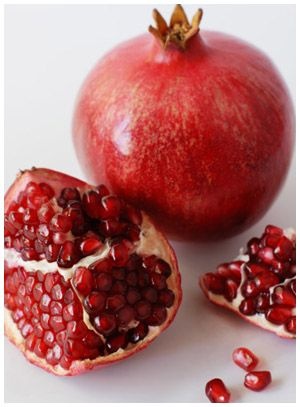The pomegranate /ˈpɒmɨɡrænɨt/, botanical name Punica granatum, is a fruit-bearing deciduous shrub or small tree growing between 5 and 8 m (16–26 ft) tall. In the Northern Hemisphere, the fruit is typically in season from September to February,[1] and in the Southern Hemisphere from March to May. As intact arils or juice, pomegranates are used in cooking, baking, meal garnishes, juice blends, smoothies, and alcoholic beverages, such as cocktails and wine.
The pomegranate is considered to have originated in the region from Iran to northern India, and has been cultivated since ancient times throughout the Mediterranean region.[2] It was introduced into Latin America and California by Spanish settlers in 1769.[2]
Today, it is widely cultivated throughout the Middle East and Caucasus region, northern Africa and tropical Africa, the Indian subcontinent, Central Asia, and the drier parts of southeast Asia.[2] It is also cultivated in parts of California and Arizona.[3] In recent years, it has become more common in the commercial markets of Europe and the Western Hemisphere.[2][3]



